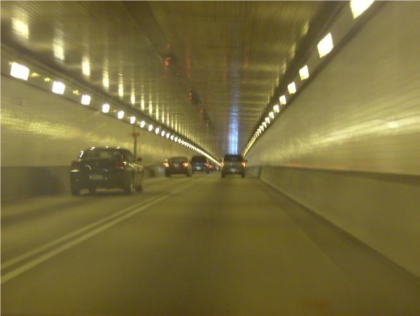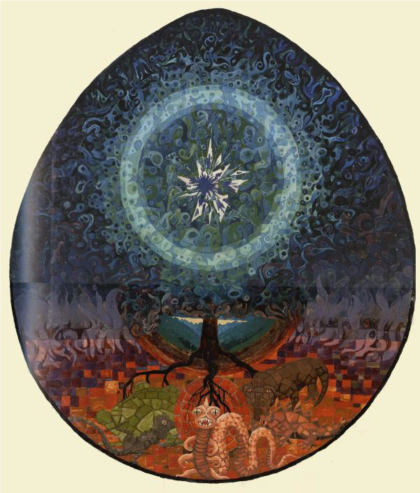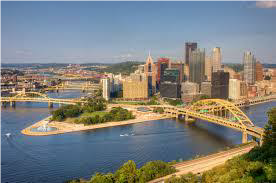Unitarian Universalist Congregation of Columbia
June 11, 2017
Rev. Jeff Liebmann
Chalice Lighting
The union of chemicals and friction
Create this flame, symbol of our faith.
Just as a spark ignites phosphorus and sulfur,
May thoughts, compassion, and dedication
Feed the fire of our souls.
Opening Words
By Rev. Jeff
Since the dawn of human civilization, humanity recognized fire as a primal element of nature. Fire represents home and hearth, the eternal battle against darkness, and the cauldron of transformation.
Entering this building each week, we reunite with treasured friends and connect with new acquaintances. When we light our chalice, something special happens. This flame signals a different character of coming together.
The fire of this chalice tells us that we enter a time of special purpose; that this space becomes sacred; and that we imbue this spiritual home with the light of reason, the chaos of change, and the warmth of compassion.
Let us celebrate the confluence of our bodies, our minds, and our spirits in this space and time, so that we may form a religious entity greater than the sum of its parts. May we rejoice as we form a force guided by common principles that will flow from this building into our community and beyond – a force of life and love.
Reflection Reading
from “Synchronicity” by Carl G. Jung
My example concerns a young woman patient who proved to be psychologically inaccessible. The difficulty lay in the fact that she always knew better about everything. Her excellent education had provided her with a weapon ideally suited to this purpose, namely a highly polished Cartesian rationalism and an impeccably geometrical idea of reality.
After several fruitless attempts to sweeten her rationalism with a somewhat more human understanding, I had to confine myself to the hope that something unexpected and irrational would turn up, something that would burst the intellectual retort into which she had sealed herself.
I was sitting opposite her one day, with my back to the window, listening to her flow of rhetoric. She had had an impressive dream the night before, in which someone had given her a golden scarab – a costly piece of jewelry. While she was telling me this dream, I heard something behind me gently tapping on the window.
I turned round and saw that it was a fairly large flying insect that was knocking against the window pane from the outside in the obvious effort to get into the dark room. This seemed to me very strange. I opened the window and caught the insect in the air
as it flew in. It was a scarabaeid beetle, or common rose-chafer, whose gold-green color most nearly resembles that of a golden scarab. I handed the beetle to my patient with the words, “Here is your scarab.”
This experience punctured the hold in her rationalism and broke the ice of her intellectual resistance. The treatment could now be continued with satisfactory results.
Sermon – Confluences
In 1969, my father received a promotion. We moved from rural northern Ohio to the City of Pittsburgh. Little did I know how a series of actions would soon change the city – and me – forever.
The Pittsburgh Steelers played woeful football for the previous 36 years, compiling winning records in only six of those seasons. As we left the only home I had ever known, the team hired a relatively unknown new head coach, and spent their number one draft pick on an equally unfamiliar defensive lineman from North Texas State University. The team won only one game that year and gained no popularity points by spending their number one pick of the 1970 draft on a quarterback from an obscure school in Louisiana. I paid little attention to the team’s seemingly continuous mediocrity. My loyalties remained with Coach Paul Brown, formerly of the Cleveland Browns, and now coaching the new franchise Bengals in Cincinnati. I even carried Bengals notebooks to school – an act that today would incite a derogatory, if not violent response from classmates.
In just two more seasons, however, Chuck Noll, Joe Greene, and Terry Bradshaw turned the Steelers from doormats to contenders.
The year concluded with the Immaculate Reception – the greatest play in the history of the sport, and cemented my relationship with the team for life.
If you have ever watched Monday Night Football on any of the many dozens of times when the game was held in Pittsburgh, you have no doubt heard some announcer talk about the “Golden Triangle,” also known as “The Point.” The unique shape of the city derived from its location as the joining of two large rivers – the Allegheny and the Monongahela – to form the Ohio River; a union commonly referred to as a confluence. I can well imagine that millions of people possess that word in their vocabularies becauseof Howard Cosell, Keith Jackson, or Al Michaels describing the city’s significance as the starting point of this important waterway.
But I learned about the confluence before the glory days. Back in 1969, I knew nothing about my new hometown and, honestly, was not interested in doing so. I left all my friends and everything I knew back in little Norton, Ohio and I did not share my
parents’ enthusiasm for the move.
In order to understand my change of heart, you must learn a little geography. When you approach Pittsburgh from the south, the Monongahela River is flanked by Mount Washington – a not insubstantial barrier running the length of the city limits. As a
result, one cannot see the city at all until passing through the Fort Pitt Tunnel under Mount Washington.
 Emerging from the tunnel, the city provides a magnificent vista as you literally burst onto the metropolis in all its glory. On clear, sunny days when the fountain in Point State Park spews water 100 feet into the air, the cityscape takes away one’s breath. It wasn’t long before I forgot all about returning to the flat farmlands south of Akron.
Emerging from the tunnel, the city provides a magnificent vista as you literally burst onto the metropolis in all its glory. On clear, sunny days when the fountain in Point State Park spews water 100 feet into the air, the cityscape takes away one’s breath. It wasn’t long before I forgot all about returning to the flat farmlands south of Akron.
I lived in Pittsburgh for 45 years, enjoying many sports championships, several major revitalization, and recognition as one of America’s most livable cities. I can say without question that my journey to the city, coinciding with a host of other changes, shaped my world view in many significant ways.
Now I find myself journeying again, traveling to another city with its own confluence of rivers. In many ways, this move resembles a reunion with an old friend – returning to a major university town with a significant geography. But I am no great poet seeking to reveal hidden mysteries in the movement of the spheres. In fact, I reject the construct of coincidence all together. I see no more cause and effect relationship between myself and success of the Steelers than I do my residence and the manner in which water carves through the landscape.
But I do see and acknowledge connections; those snippets of experience, flashes of insight, images and words that somehow bring together two ideas or emotions, and from which I can derive meaning. For that which the Hindus call auspicious coincidence, Jung coined the term synchronicity. Synchronicity is the joining of a person’s mental state with one or more external events that appear to have meaningful parallels.
Essential to the synchronistic experience is that two or more events occur together in a meaningful manner, but lack any causal relationship. Jung postulated that certain events in the universe cluster together into meaningful patterns without regard to what might be considered “normal” laws of science and rules relating to cause and effect. Synchronicity challenges the mechanistic view of the cosmos, supporting new conceptions of the universe not simply as a vast and inconceivably empty void with occasional molecules, but as a continuous, unbroken fabric of fields and forces.
This becomes relevant to us, here, today, in this space, as Jung suggested that through ritual we achieve our religious goals. He argued that one shortcoming of Western religious rituals was their emphasis on liturgical structure, as opposed to spontaneous religious experience. He advocated direct, unprompted encounters with the living symbols of the unconscious psyche. Where do we encounter these symbols and how do they encounter us?
In the case of the rational woman’s dream and the beetle at the window, the simultaneity is at once apparent. In my experience, however, synchronicity more often reveals itself in less obvious ways, sometimes taking a few days to assemble all of the
puzzle pieces that form the spark of meaning. Like a cosmic billiard table with infinite balls colliding in perpetual motion, events occur constantly around us presenting those open to the awareness with the opportunity to glean insight.
I walked down a long slope until the Salt River appeared through the brush. I veered off the trail, taking a few steps to the edge of the embankment above the water. Suddenly, a swarm of flying insects besieged me, forcing a retreat to the path. As soon
as I relented in my efforts to approach the stream, the insects withdrew. Disappointed, I walked on.
Up another hill and down again. Soon, I approached the river once more, coming upon an area with several fallen trees criss-crossing and blocking my access to the water. Once again rebuffed, I moved on, finally reached a clearing offering
unfettered admission to the burbling stream. As soon as I started downward, however, the squadron attacked again. They stung and buzzed, but this time I would not be denied. I continued to the water’s edge, swatting at my assailants.
 Thinking they might abandon the assault if I turned it into a naval engagement, I removed my shoes and socks and walked forward. The cold water refreshing my sore feet offset the hard rocks stabbing the flesh of my soles. I gingerly made my way to a log spanning the water and sat. Miraculously, after another minute, I am free of my attackers. The air around me clear and silent, I wiggle my toes in the gentle coolness. It is hard for me not to imagine this, this serenity as reward for my effort, my persistence.
Thinking they might abandon the assault if I turned it into a naval engagement, I removed my shoes and socks and walked forward. The cold water refreshing my sore feet offset the hard rocks stabbing the flesh of my soles. I gingerly made my way to a log spanning the water and sat. Miraculously, after another minute, I am free of my attackers. The air around me clear and silent, I wiggle my toes in the gentle coolness. It is hard for me not to imagine this, this serenity as reward for my effort, my persistence.
I let my mind drift into that state of non-focus. No longer listening to the sounds or looking for movement, I just become part of the scene. The seemingly endless flow of water draws me away. Looking downward, I notice the ripples in the stream.
For the first time, I realize that the two tiny sub-streams coming together after being split by the fallen log are not cancelling each other. In fact, each set of ripples carries on, one superimposed over the other. I notice the ridges created in the water by
my foot. These tiny waves, too, continue after meeting the other currents. Amazingly, at one point all three sets of ripples exist simultaneously lying parallel with each other in space.
As I contemplate this intricate layering effect, I feel a large object under my foot. Reaching down, what I expect to be a stone is in fact a freshwater clam. I had noticed shells dotted along the shore, but this fellow remained untouched by the local fauna.
I believe we encounter the living symbols of reality every day. For we exist in space and time like those clams. Most of the time, the concerns of everyday living consume our attention. We simply consider ourselves to be submerged in a natural ecosystem that sustains us. But with attention and practice, we can gain awareness of other layers within existence and the waves of energy comprising each layer.
With open acceptance of this realization, we can perceive the points at which these layers come into contact. And sometimes, these points of contact directly connect to us. This process of synchronicity reveals truths that transcend ordinary existence, that exist beyond the constructed illusion of our daily lives.

These truths exist outside our philosophy. As tranquil streams that meet and merge and flow as one to seek the sea, our kindred hearts and minds unite to build a church that shall be free.
As we meet and begin the process of merging, we will work hand-in-hand to craft the liberating ministry of this prophetic church. We will retain our unique identities, revering our pasts, but we will trust the dawning future more. Overcoming any obstacles in our way with the power of Love, we will boldly explore and proclaim these truths that will set all people free from narrow thought and lifeless creed.
The eternal truth of confluence flows throughout our religious movement. Our faith abounds with joinings of ideas and beliefs, from Arius and Origen, to Servetus and Socinus, to the Polish Brethren and John Sigismund, to the modern merger of the American Unitarian Association and the Universalist Church of America. Like millions of capillaries pumping blood through the arteries and veins of the body of our denomination, confluence is the natural order of things.
I look forward to the coming days and getting to meet and know each of you. I welcome the opportunity to experience your groups and committees, as well as the greater community. I hope we all can imagine ourselves emerging from the long tunnel and bursting onto the panorama of the future of Unitarian Universalism here in Columbia.
Spirit of Life and Love that goes by many names, be with us now in a moment of
reflection, meditation, and prayer




